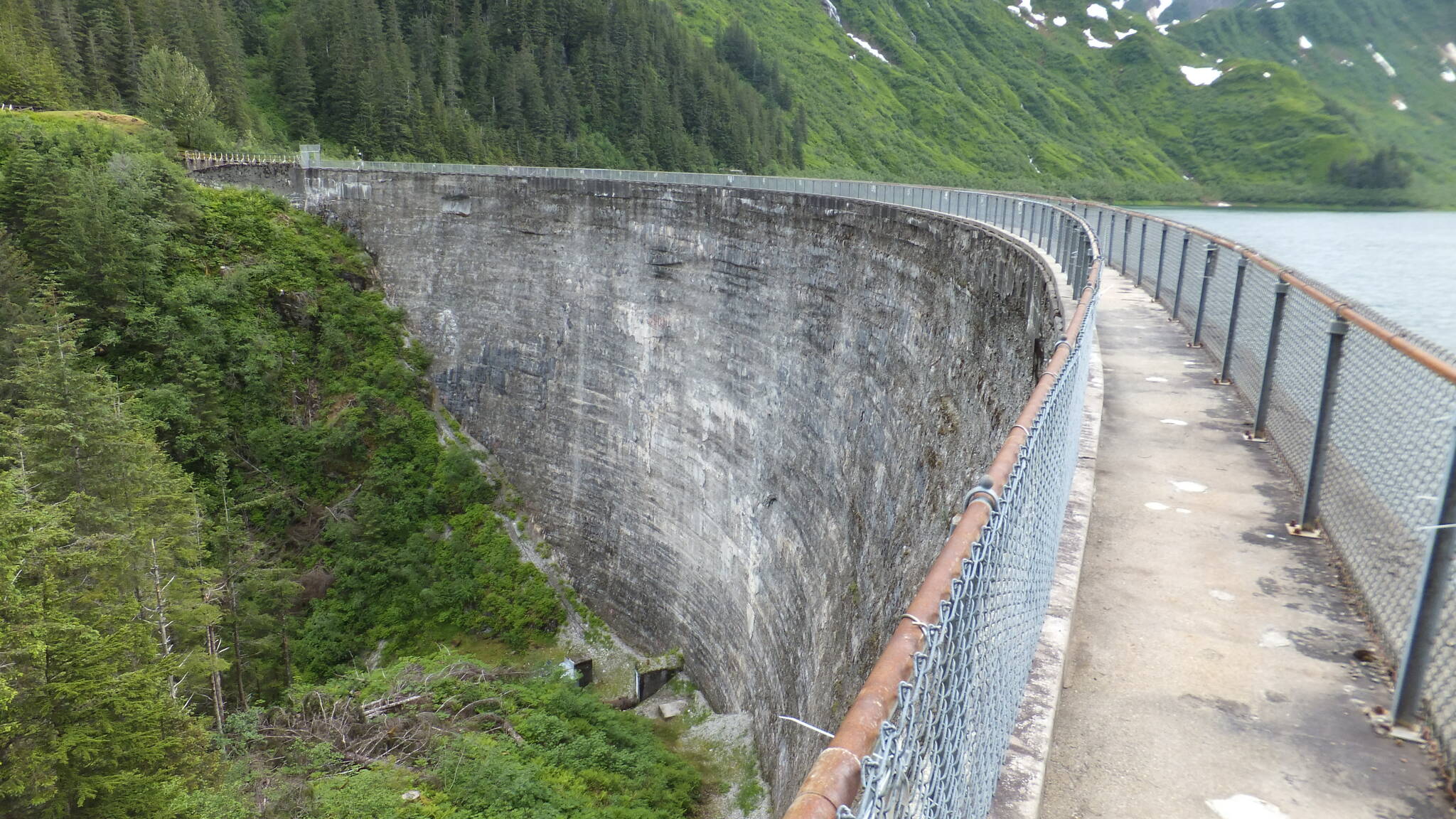The Salmon Creek Dam is receiving some much-deserved recognition as the first constant angle concrete arch dam in the country.
It is now being dedicated as a National Historic Civil Engineering Landmark. The dedication ceremony will be held in Juneau on Saturday, Sept. 10, with more details to follow.
“By holding the central angle of the dam constant, it tightens up the radius down at the bottom and so it’s a wider radius on top and tighter radius on the bottom and what that does is it allows a much stronger arch based resistance to hydrostatic pressure that would ever be possible with just a constant radius, so what the engineering significance of that is you can greatly reduce the amount of concrete it takes because you reduce the thickness at the bottom,” said American Society of Civil Engineers Alaska Section former President Greg Kinney. “The result of this was they were shooting for about a 25% reduction in the amount of concrete and it ended up being about a 33% reduction[…](the dam) still supplies about 7% of the power and about a third of the water used in Juneau. So, for that 33% reduction of concrete, even with that you have twice the factor of safety against failure, so this was a very impressive accomplishment and became a prototype, kind of a worldwide movement for dams.”
Alaska Electric Light and Power is in charge of inspecting the dam each month, which entails physical verification of the reservoir level, measurement of dam deflection (any movement of the structure), and visual inspection for any cracking, erosion, seepage, or other deterioration. Federal Energy Regulatory Commission personnel inspect Salmon Creek Dam annually. FERC also requires a thorough inspection and investigation by a qualified independent engineer every five years.
“The dam was built between 1913 and 1914 (two construction seasons). The dam is in operation and in good health; current annual upkeep of the dam consists of real-time monitoring (including video cameras and automated alarms) of the status of the dam, monthly and annual inspections by AEL&P staff, annual inspections by Federal Energy Regulatory Commission (FERC) staff, exercising of valves, testing of auxiliary systems and protective devices, and vegetation management,” said Debbie Driscoll, AEL&P vice president and director of consumer affairs.
Sitka’s O’Connell Bridge will also be recognized as being a State Historic Civil Engineering Landmark. Having first been constructed in 1972, the O’Connell Bridge was the first vehicular cable-stayed bridge in Alaska, which serves as the essential connection for the community. The dedication ceremony will be held in Sitka on Sunday, September 11.
Prior to the two recognition ceremonies, the ASCE Juneau Branch is also planning to host a barbecue on Friday, Sept. 9 at 5:30 p.m. at the Sandy Beach Shelter. Transportation will be provided from Downtown Juneau to Douglas for all who RSVP.
If you are interested in attending any of the upcoming events, you’re asked to RSVP by emailing Janice.Wells@respec.com by July 31. You can learn more about these recognitions by visiting asce.org/about-civil-engineering/history-and-heritage/historic-landmarks.
• Contact reporter Jonson Kuhn at jonson.kuhn@juneauempire.com.

